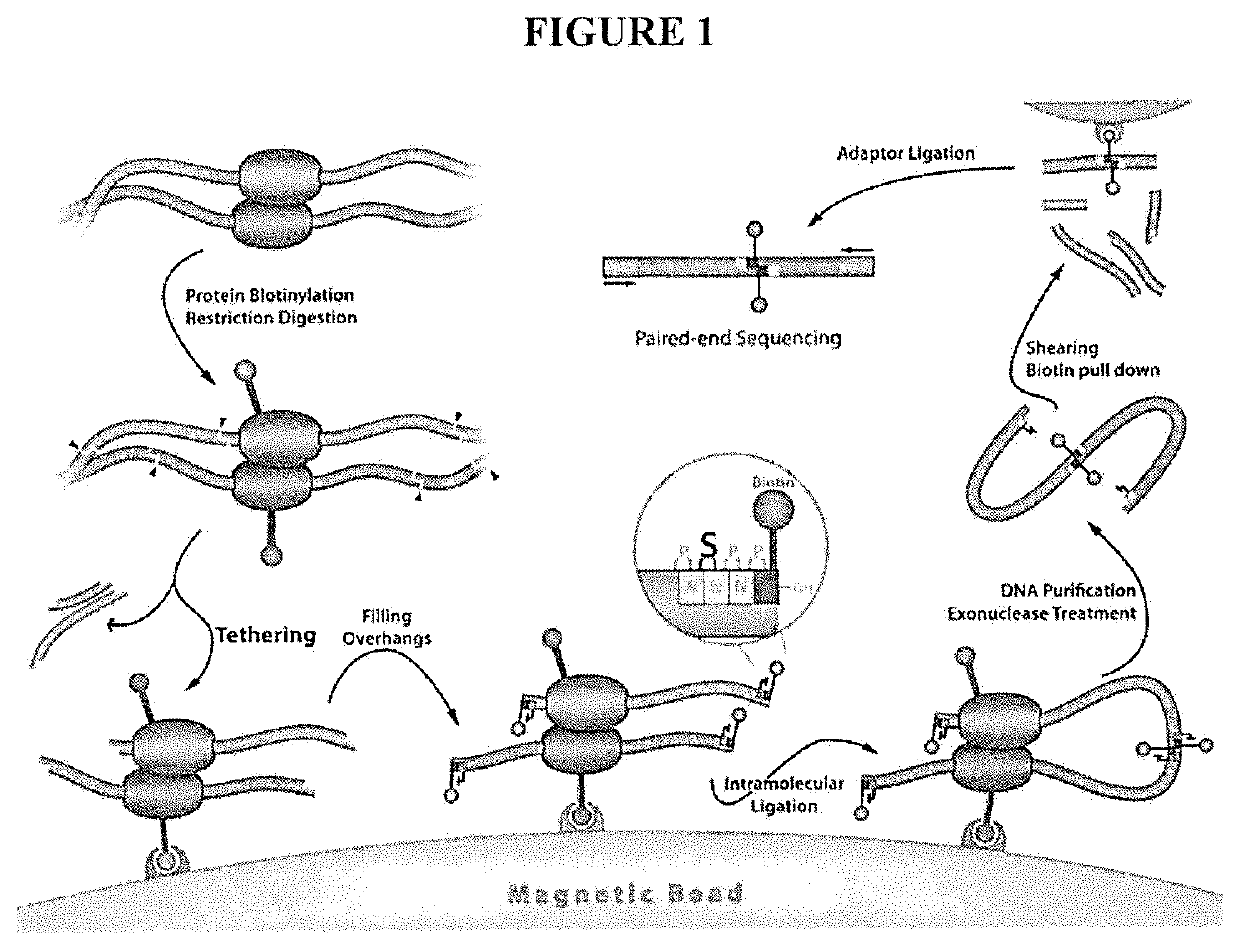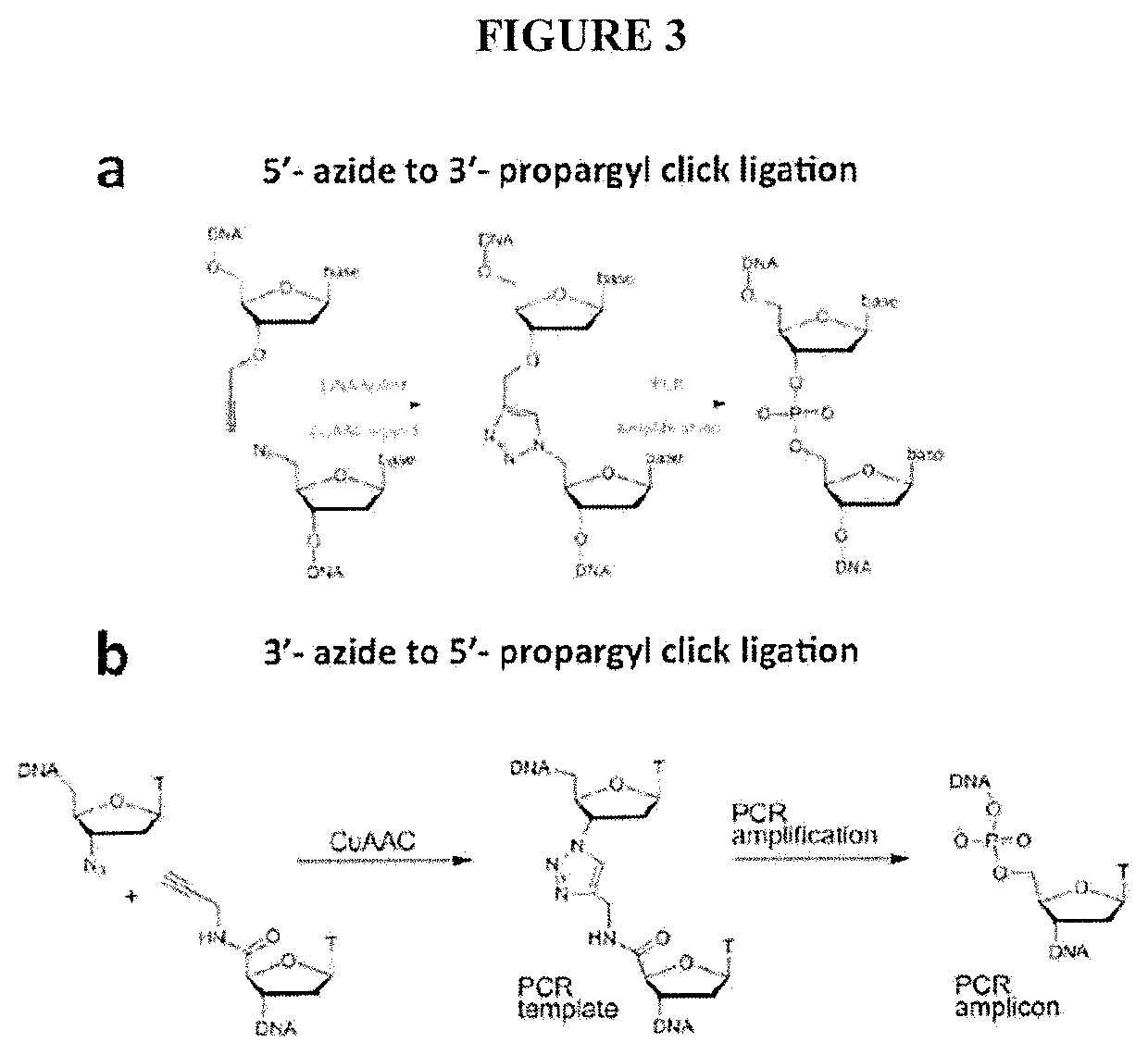Genome-wide mapping of dna-dna proximities in the nucleus
a technology of proximities and genomes, applied in the field of genome-wide mapping of dna-dna proximities in the nucleus, can solve the problems of false chromatin contacts and severely hinder the structure calculation of large genomes, and achieve the effect of less noise and higher resolution
- Summary
- Abstract
- Description
- Claims
- Application Information
AI Technical Summary
Benefits of technology
Problems solved by technology
Method used
Image
Examples
Embodiment Construction
[0079]A major limitation of the current HiC / TCC protocol is the low data acquisition efficiency. It is estimated that only a few thousands of DNA-DNA proximity contacts can be detected per cell. Compared with the billion base-pair size of the genome of mammalian cells, this low data coverage presents severe problems in structural modeling due to the extremely low observation-to-parameter ratio and potential bias as some regions are over sampled whereas some other regions are under sampled. Several factors may contribute to the low data acquisition efficiency, including: (1) Low efficiency of the current method (chemical cross-linking by formaldehyde) to capture chromatin structure; (2) Limited efficiency in surface tethering; (3) Low efficiency in blunt end ligation after the incorporation of biotin-bearing base analogs into the DNA ends. Problem #2 is specific to the TCC protocol and solutions and is briefly addressed in the present invention. Problems #1 and #3 are significant iss...
PUM
| Property | Measurement | Unit |
|---|---|---|
| wavelength | aaaaa | aaaaa |
| particle size | aaaaa | aaaaa |
| diameter | aaaaa | aaaaa |
Abstract
Description
Claims
Application Information
 Login to View More
Login to View More - R&D
- Intellectual Property
- Life Sciences
- Materials
- Tech Scout
- Unparalleled Data Quality
- Higher Quality Content
- 60% Fewer Hallucinations
Browse by: Latest US Patents, China's latest patents, Technical Efficacy Thesaurus, Application Domain, Technology Topic, Popular Technical Reports.
© 2025 PatSnap. All rights reserved.Legal|Privacy policy|Modern Slavery Act Transparency Statement|Sitemap|About US| Contact US: help@patsnap.com



